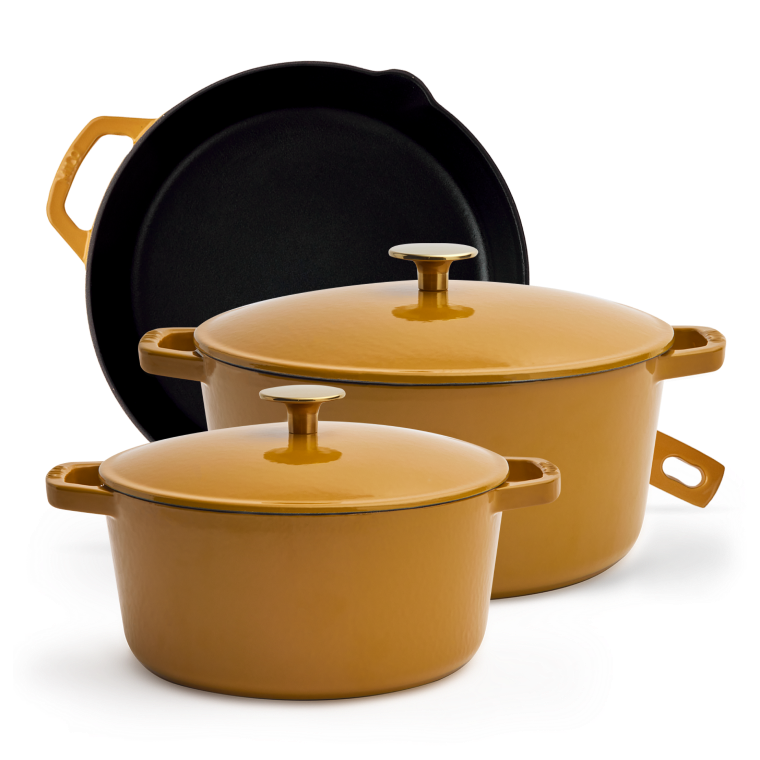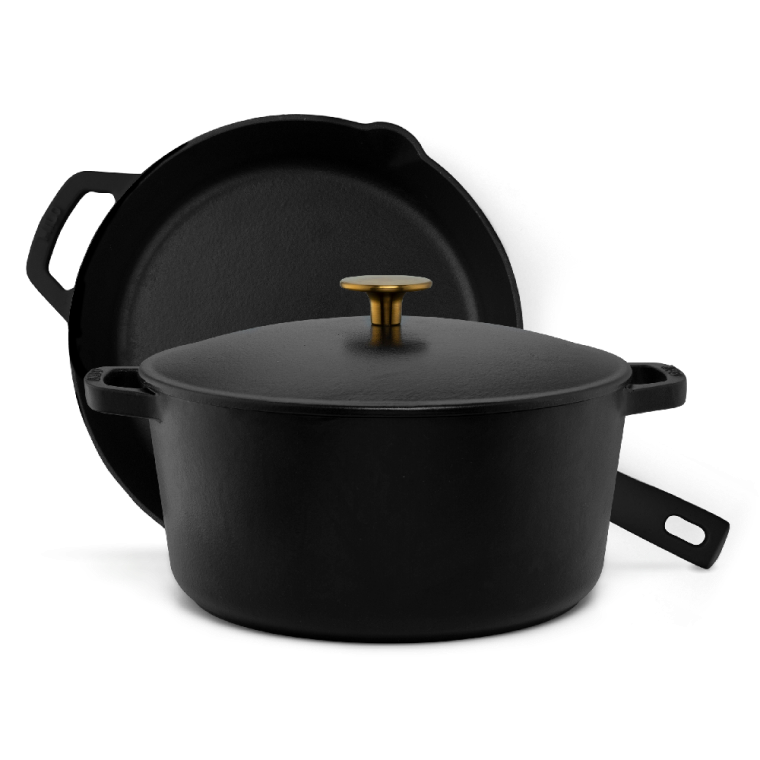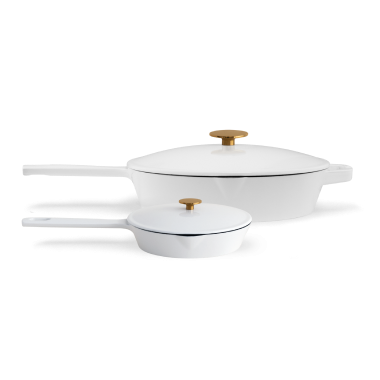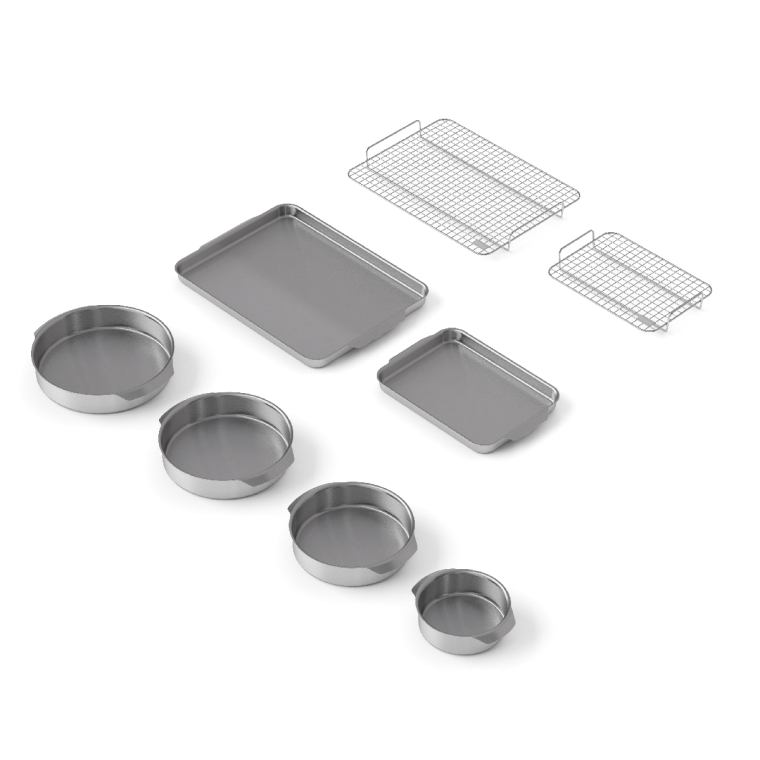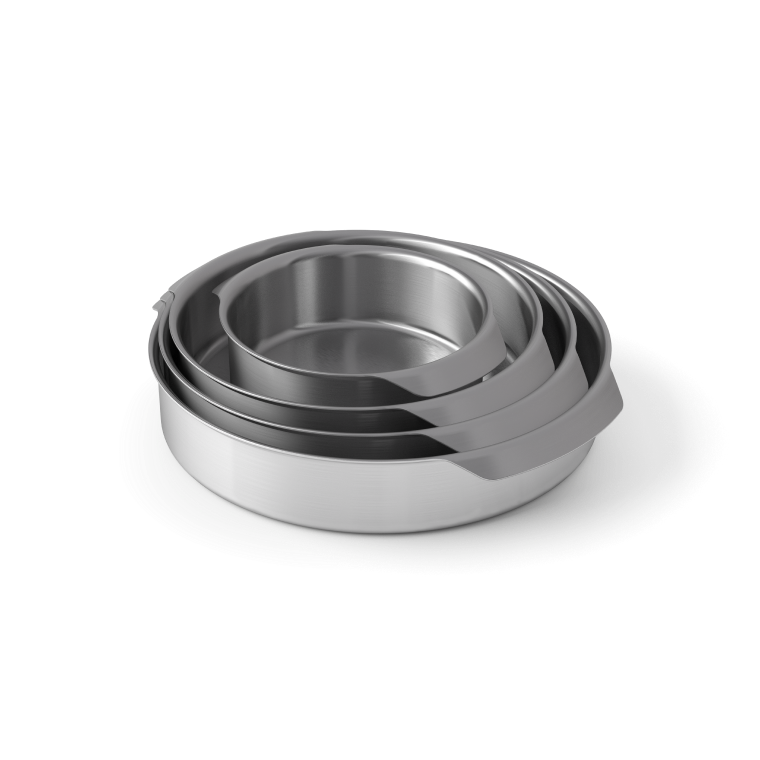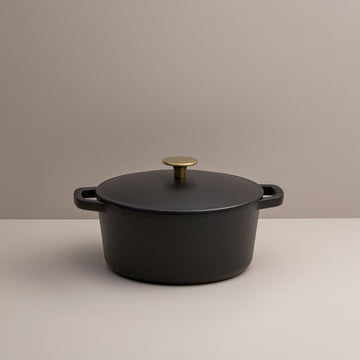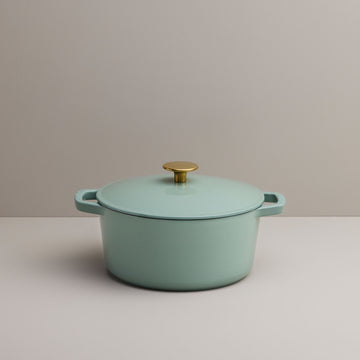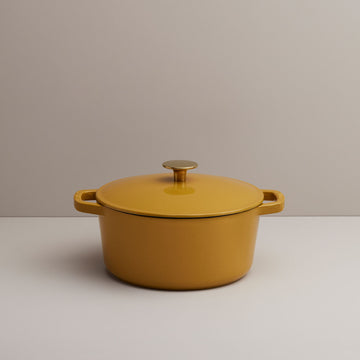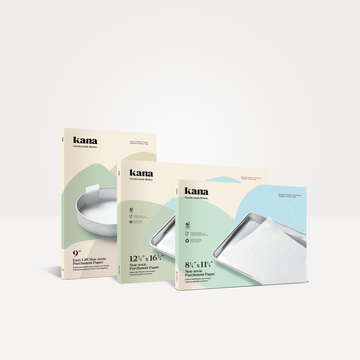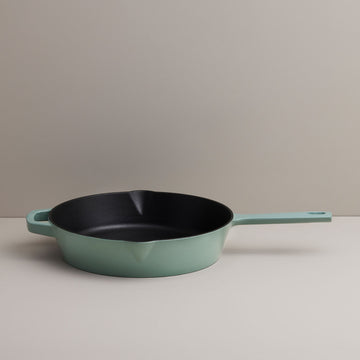In essence, a Dutch oven is a heavy-based pot with a tight-fitting lid that can maintain a consistent temperature for a long period of time. Beyond that, there actually can be a fair amount of variation when it comes to features and materials. One design, however, that has stood the test of time and is, arguably, the prime example of a Dutch oven is the round, two-handled cast iron Dutch oven. What makes cast iron Dutch ovens unique is that they are made in one piece by pouring molten iron into a mold, usually made of sand. The technique was invented in China as early as 800 BCE, and by the 1600s, The Netherlands had developed a reputation in Europe for their cast-metal cookware.
The story goes: In 1707, Englishman Abraham Darby first saw this technique used in The Netherlands, and when he got home, he patented it and named the invention a “Dutch oven.”
These sturdy and reliable cooking pots have been a kitchen staple for literally hundreds of years and (if you clean your Dutch oven properly) they last well into the future too.
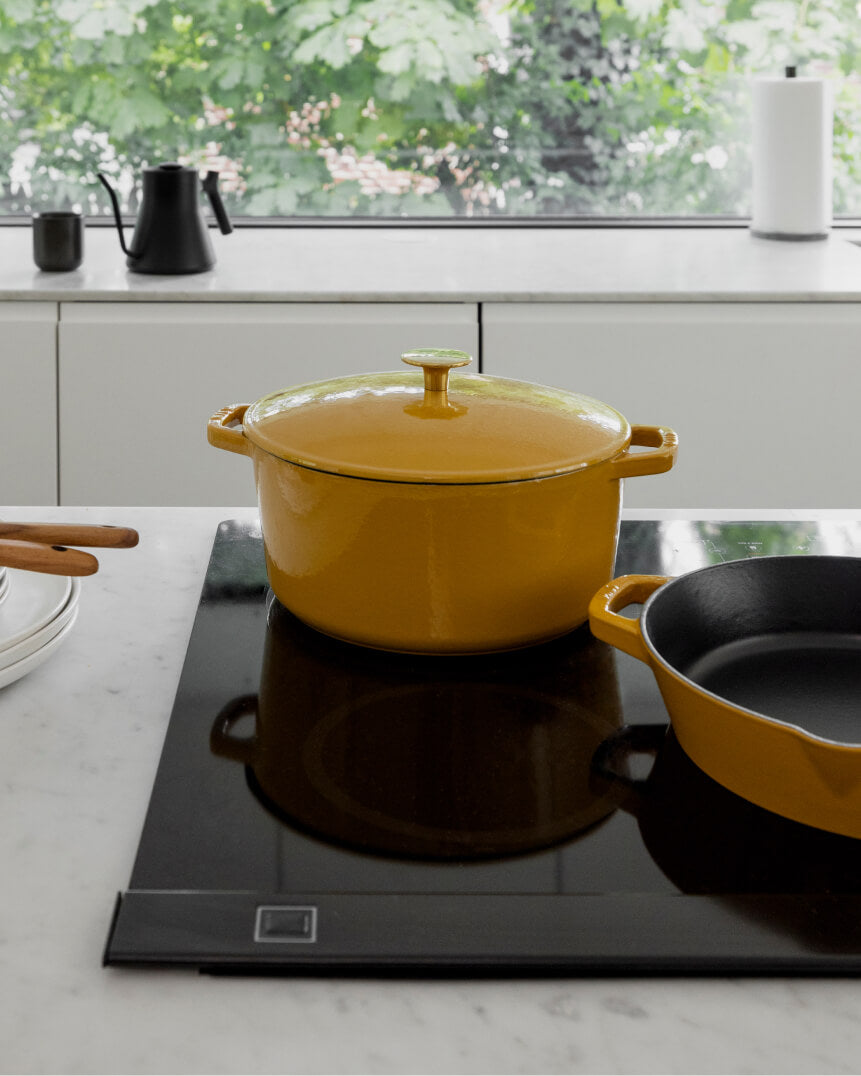
Whether you’ve been a Dutch-oven devotée your whole life or you recently learned about this iconic piece of cookware, it’s hard to deny that the Dutch oven’s popularity has skyrocketed in recent years. It’s easy to see why too — from baking bread to cooking for a crowd, this stylish kitchen workhorse is right at home in the modern kitchen.
What is a Dutch Oven?
What is an enameled Dutch Oven?
Over time, the classic design of a cast iron Dutch oven has been experimented with, resulting in all sorts of tweaks to the shape, size and material of the original. One particularly mentionable innovation is the addition of enamel coating.
Not only do these elegant pots come in a range of colors and finishes to suit your taste and décor, enameled cast iron Dutch ovens are easier to clean and are so good-looking that they can live on your counter.
Not only do these elegant pots come in a range of colors and finishes to suit your taste and décor, enameled cast iron Dutch ovens are easier to clean and are so good-looking that they can live on your counter.


Why are Dutch Ovens so good?
What makes Dutch ovens (also sometimes called French ovens) so enduring is their versatility. The sturdy build helps store and maintain heat, the heavy lid traps condensation and allows for more efficient heating, and the single-piece construction means Dutch ovens move easily between the cooktop and the oven. You might even call it the original multi-cooker.
In fact, any classic recipe that has you reaching for your electric slow cooker or pressure cooker was likely whipped up in Dutch oven first (boeuf bourguignon, anyone?). And even now, with all these gizmos and gadgets available, the humble Dutch oven continues to hold its own in the modern kitchen with unmatched utility and timeless style.
In fact, any classic recipe that has you reaching for your electric slow cooker or pressure cooker was likely whipped up in Dutch oven first (boeuf bourguignon, anyone?). And even now, with all these gizmos and gadgets available, the humble Dutch oven continues to hold its own in the modern kitchen with unmatched utility and timeless style.

JOIN THE CLUB
Like this story?
You’ll love our newsletter!
You’ll love our newsletter!
Keep exploring
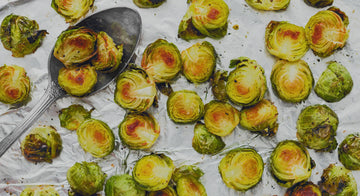
Is aluminum foil safe to cook with?
Aluminum foil may have been a kitchen pantry staple for the last 100 years but, as new research around food safety and environmental impact shows, it’s time we wrap up our love affair with this malleable metal.
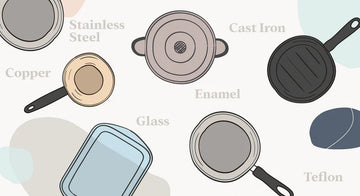
How to shop for non-toxic cookware and bakeware
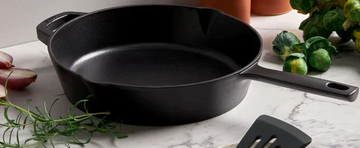
The Advantages of Enameled Cast Iron and Raw Cast Iron Cookware
Cast iron cookware comes in all shapes and sizes and are classified as kitchen staples all around the world. Here’s a look at why both raw and enameled cast iron Dutch ovens are perfect for any kitchen.
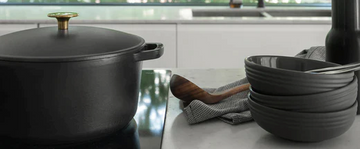
Why is it called a Dutch Oven?
While Dutch ovens have become a charming and familiar part of any modern kitchen, their name does lead to some confusion. What do the Dutch have to do with it? Isn’t it an English invention? And what about the French? It’s time to straighten things out.
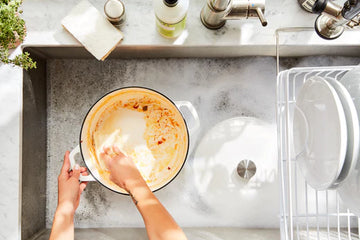
How to clean & season a cast iron Dutch Oven
Like with any cookware, there are times when your Dutch oven might get a little sticky, scorched or stained, but taken care of properly, your cast-iron cookware should last you well into the future.
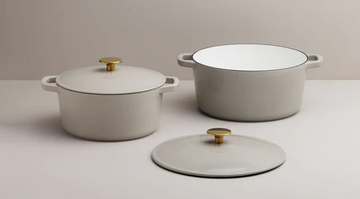
How to choose the best size Dutch Oven for you
Cast-iron Dutch ovens come in all shapes and sizes, and buying the best one for you is all about what you're cooking and who you’re cooking for.

Is aluminum foil safe to cook with?
Aluminum foil may have been a kitchen pantry staple for the last 100 years but, as new research around food safety and environmental impact shows, it’s time we wrap up our love affair with this malleable metal.

How to shop for non-toxic cookware and bakeware

The Advantages of Enameled Cast Iron and Raw Cast Iron Cookware
Cast iron cookware comes in all shapes and sizes and are classified as kitchen staples all around the world. Here’s a look at why both raw and enameled cast iron Dutch ovens are perfect for any kitchen.

Why is it called a Dutch Oven?
While Dutch ovens have become a charming and familiar part of any modern kitchen, their name does lead to some confusion. What do the Dutch have to do with it? Isn’t it an English invention? And what about the French? It’s time to straighten things out.

Crispy pizza at home: tips for the perfect crust
Have you ever made pizza at home, but been disappointed by a soggy or undercooked crust? There are tools and tricks to make homemade pizza just as good as delivery, whether you like thin or thick crust.

How to clean & season a cast iron Dutch Oven
Like with any cookware, there are times when your Dutch oven might get a little sticky, scorched or stained, but taken care of properly, your cast-iron cookware should last you well into the future.
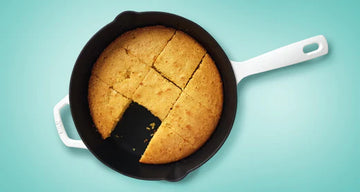
5 deliciously easy flour-free bread recipes
Simple bread recipes to make at home when you're running short on wheat flour.

The Advantages of Enameled Cast Iron and Raw Cast Iron Cookware
Cast iron cookware comes in all shapes and sizes and are classified as kitchen staples all around the world. Here’s a look at why both raw and enameled cast iron Dutch ovens are perfect for any kitchen.
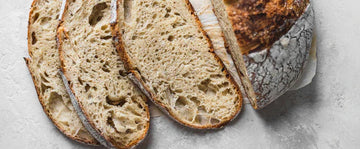
The proof is in the... proofing
The proofing process is an essential part of baking yeast-leavened goodies. Without it, you'll end up with a sad, flat pancake instead of that beautiful bread loaf you were hoping for. Yes, it takes some time to perfect the process, but once you've got it, you too can experience freshly-baked bread and pastries at home.
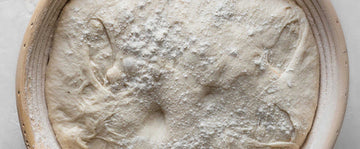
Proper proofing: how to work with yeast doughs
The most important technique to master when learning how to make bread and other yeasted treats is proofing, where all the rising happens. Today we’re going to learn how to proof bread dough for the best homemade loaves!

Why is it called a Dutch Oven?
While Dutch ovens have become a charming and familiar part of any modern kitchen, their name does lead to some confusion. What do the Dutch have to do with it? Isn’t it an English invention? And what about the French? It’s time to straighten things out.

How to clean & season a cast iron Dutch Oven
Like with any cookware, there are times when your Dutch oven might get a little sticky, scorched or stained, but taken care of properly, your cast-iron cookware should last you well into the future.
